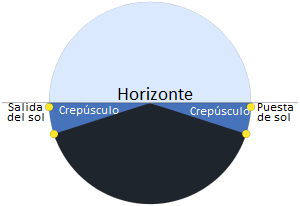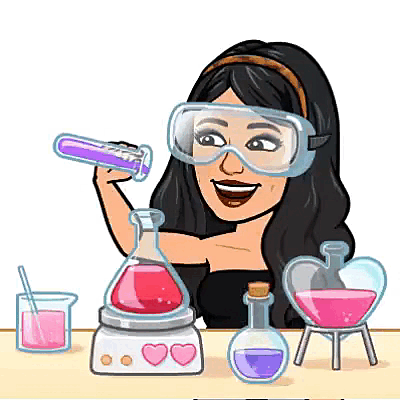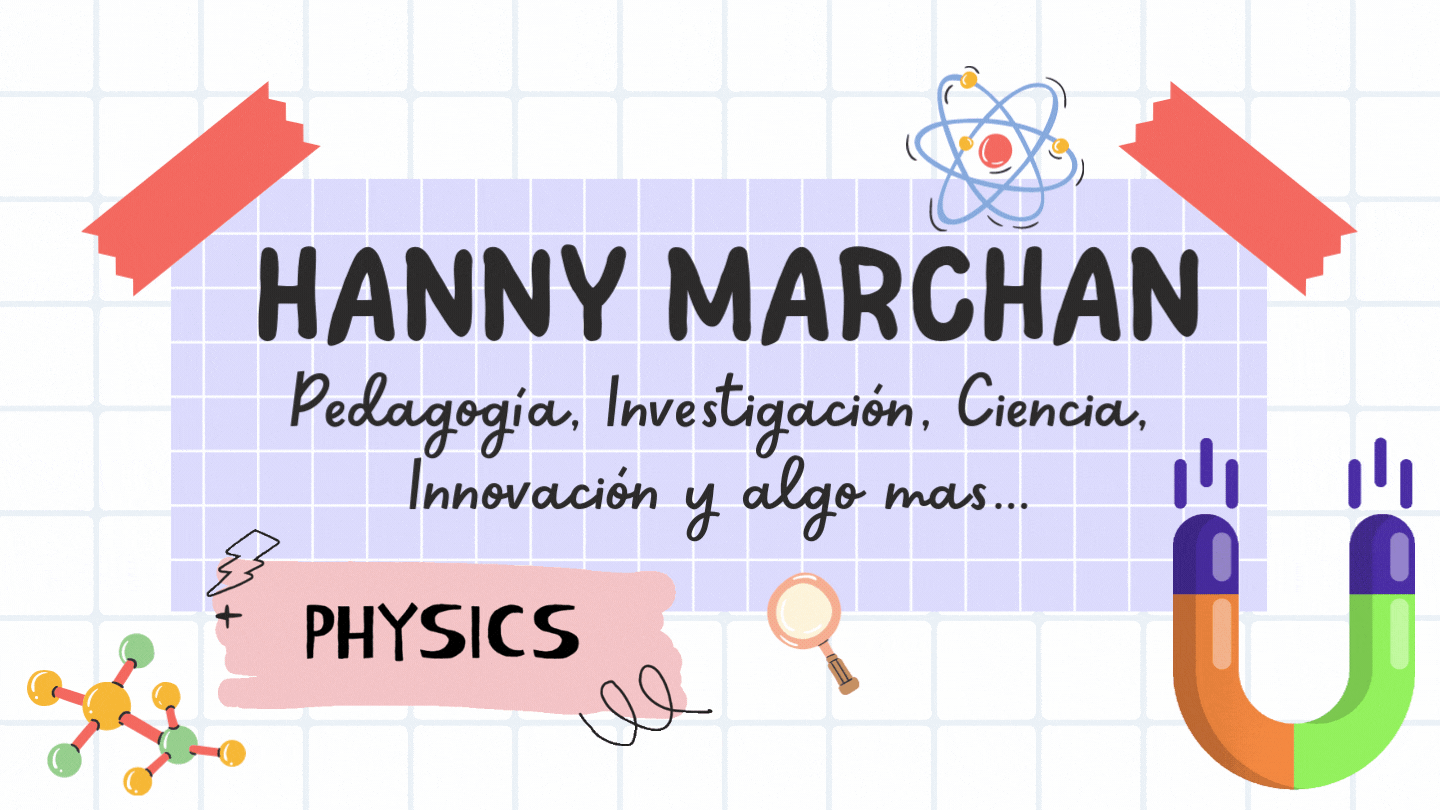El color rojo es el que menos se dispersa y por ende es el que más transmite, el mismo pasa por más atmósfera que cualquier otro color. Esto quiere decir, que mientras más gruesa sea la atmósfera que es atravesada por un rayo de luz solar, conlleva a más tiempo en el que se pueden dispersar todos los componentes de mayor frecuencia de la luz. Esto nos lleva a decir que la luz que mejor atraviesa a la atmósfera es la roja, por ende la luz solar atraviesa más atmósfera durante el crepúsculo, este es el principal motivo por el que tanto los crepúsculos y las auroras son de tonalidad roja.
Durante el día, específicamente en horas de mediodía, la luz puede atravesar una cantidad mínima de atmósfera para lograr llegar a la superficie terrestre; en ese momento solo se puede dispersar una pequeña parte de la luz solar, la que es de alta frecuencia, es lo suficiente como para que el sol se vea amarillento. Sin embargo, al transcurrir el día cuando empieza a llegar la tarde, el sol baja en el cielo y esto alarga la trayectoria de sus rayos en la atmósfera, y de los mismos se dispersan cada vez más luz violeta y azul; cuando se elimina el violeta y el azul esto hace que la luz transmitida sea más roja, así el sol se vuelve más rojo. Los colores comienzan a cambiar pasan por el amarillo, el anaranjado y finalmente es rojo-anaranjado cuando se oculta el sol. Un dato bastante curioso es que los crepúsculos y las auroras suelen ser bastante coloridos después de que un volcán haga erupción, esto se debe a que en el aire habrá abundancia de partículas mayores a las moléculas del aire.
Red is the color that scatters the least and therefore transmits the most, passing through more of the atmosphere than any other color. This means that the thicker the atmosphere that a ray of sunlight passes through, the longer it takes for all the higher-frequency components of light to scatter. This leads us to say that the light that best passes through the atmosphere is red, therefore sunlight passes through more atmosphere during twilight, which is the main reason why both twilights and auroras are red in color.
During the day, specifically at midday, light can pass through a minimal amount of atmosphere to reach the Earth's surface; at that moment, only a small part of the sunlight, which is high frequency, can be scattered, which is enough to make the sun appear yellowish. However, as the day progresses and evening approaches, the sun descends in the sky, lengthening the trajectory of its rays in the atmosphere and scattering more and more violet and blue light. When the violet and blue light is eliminated, the transmitted light becomes redder, and the sun appears redder. The colors begin to change, passing through yellow and orange, and finally becoming red-orange when the sun sets. A curious fact is that twilights and auroras are often quite colorful after a volcano erupts. This is because there will be an abundance of particles larger than air molecules in the air.
-----------------

[Source](https://es.wikipedia.org/wiki/Crep%C3%BAsculo)
----------------------
Es importante resaltar, que los crepúsculos se apegan a las reglas de las mezclas de colores; cuando a la luz blanca se le disminuye el azul el color que queda es el amarillo; cuando se resta el violeta que es de mayor frecuencia el color resultante es el anaranjado; si se disminuye el color verde el color complementario será el magneta. No obstante, la combinación de los colores va a depender mucho de las condiciones atmosféricas, las cuales suelen ser muy variadas de un día para otro y nos regalan una gama amplia de crepúsculos para poder disfrutarlos.
It is important to note that twilights adhere to the rules of color mixing; when blue is subtracted from white light, the remaining color is yellow; when violet, which has a higher frequency, is subtracted, the resulting color is orange; if green is subtracted, the complementary color will be magenta. However, the combination of colors will depend greatly on atmospheric conditions, which tend to vary greatly from one day to the next and give us a wide range of twilights to enjoy.
-----------
Ya para despedirme espero que el tema sea del agrado de los lectores y deseo ver en los comentarios sus opiniones y aportes significativos que ayuden a la ampliación del tema y que genere un debate crítico y enriquecedor para la satisfactoria divulgación del conocimiento científico
In closing, I hope that the topic is to the readers' liking and I hope to see in the comments your opinions and significant contributions that will help to broaden the topic and generate a critical and enriching debate for the satisfactory dissemination of scientific knowledge.
--------------
Referencias
Halliday, D; Resnick, R & Krane K. (1999). Física Volumen 2. Compañía Editorial Continental: México.
Hewitt, P. (2007). Física Conceptual. Pearson Educación: México.
References
Halliday, D; Resnick, R & Krane K. (1999). Physics Volume 2. Continental Publishing Company: Mexico.
Hewitt, P. (2007). Conceptual Physics. Pearson Education: Mexico.
-----------------------
Traductor Deepl
Translator Deepl
---------------


#stem-espanol
#spanish
#ciencia
#educacion
#optica
#crepusculo
#aurora
#fisica
#posh
#creativecoin
Payout: 0.000 HBD
Votes: 297
More interactions (upvote, reblog, reply) coming soon.